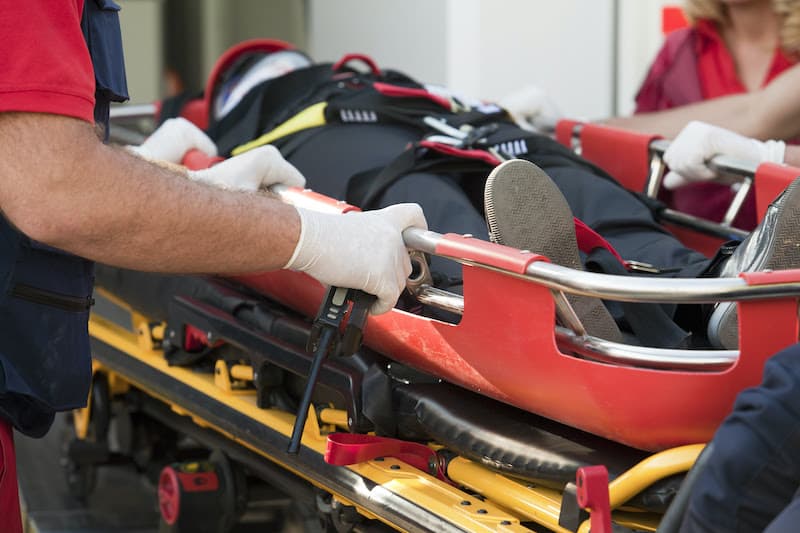Multiple Operating Equipment Incidents Near Overhead Power Lines

Safety first is rule #1 when operating equipment near overhead power lines. The growing number of recent equipment incidents has prompted a safety warning.
WorkSafe Victoria is urging employers operating equipment near overhead power lines to put safety first following a spate of electric shock incidents and near-misses.
Since November 2020, one worker has died and five others were taken to hospital with serious injuries after their machinery contacted power lines.
A 54-year-old construction worker was taken to hospital in a critical condition following an electric shock when the arm of the excavator on his truck struck power lines at Pakenham.
Two construction workers were injured, one critically, when a crane arm struck live 22kV lines at Dromana on April 12.
Other serious equipment incidents occurred on farming and transport industries.
To respond to these incidents, WorkSafe Victoria Executive Director of Health and Safety Julie Nielsen said: “no matter the situation, care had to be taken when using machinery near electrical wires.”
“Electrocution can occur in just moments and if an electric shock doesn’t kill, injuries can be severe and life-long,” Ms. Nielsen said.
“It doesn’t matter whether you are a large employer in construction, transport, or a sole farm operator, all duty holders should review their systems of work when operating equipment near overhead power lines.”
“Make sure you assess the environment you are operating machinery in and keep clear of live electrical cables because WorkSafe Victoria will not hesitate to prosecute duty holders that fail to protect workers.”
In September, 2020, a quarry at Maude was convicted and fined $35,000 after a worker luckily escaped injury when his excavator contacted power lines.
WorkSafe Victoria inspectors found there were no protective barriers or warning devices to prevent the incident occurring.
WorkSafe Victoria recommends the following equipment work safe directives
To avoid contact with power lines employers and contractors using trucks and other mobile plant should:
- Identify all power lines on-site and at site entrance or exit points
- Comply with the No-Go-Zone rules and spotter requirements when operating mobile plant around power lines
- Monitor weather conditions closely – power lines can sag in extreme heat and sway in strong winds
- Be aware that power lines are more difficult to see at dawn and dusk
- Designate travel paths, loading and unloading areas well away from power lines
- Install warning signs or other visual indicators on each side of the power line to warn operators and drivers
- Consider the type and height of heavy vehicles, plant and machinery and if they can safely operate near the power lines
- Induct drivers and operators in the risks of power lines on site, and the controls in place to prevent hitting the power lines.
- If routinely working near power lines consider engineering controls such as presence sensing systems that can detect power lines and interlock plant movements.
- Consult with workers on safe systems of work for operating near power lines.
This article is from the Australasian Mine Safety Journal, “Powerline incidents prompt safety warning.”
TapRooT®: Custom Equifactor® Equipment Troubleshooting Tables are easy to use, easy to produce
To grow your knowledge about Equifactor® and the Equipment Troubleshooting tables, check out this great Equifactor® article by Ken Reed, then view the videos listed below:
You and your troubleshooting team will benefit from the new Equifactor® book and the Equifactor® Training. In the Equifactor® training course, you’ll learn how to troubleshoot equipment, as well as incident investigation.
Take action to improve your safety culture and eliminate human errors
Worldwide, TapRooT® has a team of investigators and instructors with years of extensive training. They’re ready to offer training and assistance via public and on-site courses.
TapRooT® training is global to meet your needs. If you need particular times or locations, please see our full selection of courses.
Want to discuss a course? Please reach out to discover what we can do for you, or call us at 865.539.2139. Need an on-site course? Contact us or call: MAIN: 865.539.2139; SUPPORT: 865.357.0080.
We also offer ongoing support to our clients through free newsletters and root cause tip videos, the root cause analysis blog, and our annual Global TapRooT® Summit. We’re here to find solutions for you.



